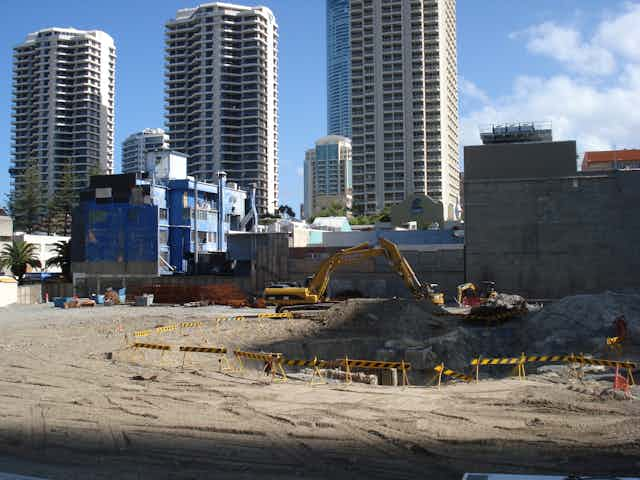This is the eleventh article in our Contested Spaces series. These pieces look at the conflicting uses, expectations and norms that people bring to public spaces, the clashes that result and how we can resolve these.
When we think of coasts, we are likely to think about the great sandy beaches that have been the destination for many day trips and long weekends. At times these spaces have been sources of contestation, especially in areas of public access and codes of conduct. However, behind the sand dunes are other landscapes with deep histories of social conflict.
Moments from coastal pasts have had a major impact on how we see different coasts today. They feed into distinct ideals and ethics on place, especially in terms of how it is developed.
Noosa Heads versus Surfers Paradise
Noosa Heads is a prime example of this. Noosa’s history during colonisation includes a number of difficult stories to tell. Examples include the contentious tale of the rescue of Eliza Fraser, or the fate of the traditional owners, the Gubbi Gubbi people, at the hands of the colonial settlers and the native police.
Yet it was in the 1960s when modern conflict over land use really took shape in Noosa. A proposal by the developer T.M. Burke to build a resort at Alexandria Bay created a stir among locals. The local shire was set to build an access road around the headland, destroying well-trodden walking tracks.
A group led by local Arthur Harrold fought this proposal and formed the still-operating Noosa Parks Association. Thus began a long-standing fight against over-development, mining and other impediments to what residents saw as the natural beauty of the coast. This included the Cooloola Conflict and the now-famed resistance to high-rise development.
While there are elements of conservationism here to consider, these conflicts arose in a bid to keep Noosa low-key, with a slower mentality and authentic natural surrounds. Today, these ethics of authenticity are firmly embedded in planning regulation, illustrating the strength of local resistance past.
Noosa residents’ key fear in the 1960s and ’70s was losing their sense of place to the different ideals embodied in another coastal mecca, Surfers Paradise. Like Noosa, Surfers has a long history of conflict. Yet this place developed much differently due to several key factors.
Arguably, the significant turning point was in 1925 when Jim Cavill bought the then Elston Hotel and renamed it the “Surfers Paradise” hotel. Cavill and his wife proceeded to turn the coastal setting into something more than a place to bathe or surf.
Alongside the hotel, they built a zoo full of exotic animals that gave the place a peculiar flavor. Having been influenced by the American example of how to develop coasts, Cavill exhibited a desire to construct Surfers Paradise as an exotic international resort. However, due to the war in the Pacific, Surfers Paradise was restricted by building codes, frustrating locals who were eager to begin making the space bigger.
Shortly after the war, the codes eased and developers flocked to the “Golden Coast”. In the course of development, local leaders such as the progress association often came into conflict with governance.
In the example of parking meters, this led to the controversial meter maid scheme, which further established Surfers Paradise’s theme as an overtly transgressive and sexualised place.
Conflicts of a climate-changed future
In both spaces, conflicts have continued into contemporary times.
Recently, for instance, the fight against the proposed Southport Spit development has again drawn locals into conflict with authorities. Such fights against development continue up and down our coastlines. These are mostly driven by the desire to maintain a specific lifestyle and aesthetic appeal.

However, early critics of coastal development saw other concerns about coastal development. For instance, in 1879 a journalist for The Gympie Times, while contemplating the construction of Noosa and Tewantin, wondered about the location of the village and whether one day seawater might be running between you and your neighbour.
While we have different motivations for maintaining or developing our coastal places, we seem to neglect discussions about the risks of living so close to the ocean.
As we approach a climate-changed future, issues of sea-level rise and coastal flooding are going to challenge our thinking about coasts.
History has shown that several of our coastal meccas are already susceptible to significant damage from storms and cyclones. We scramble to rebuild following these events, but few debates are had about retreating away from the sea.
As we continue into that risky climate-changed landscape, however, we might see new players like insurance companies become increasingly important.
Already in the tropics, insurance premiums have caused a stir politically and in the media. In the future, though, we may need to consider to whether we have to redefine our relationship with coasts as they become more risky places to live.
You can find other pieces published in the series here.

